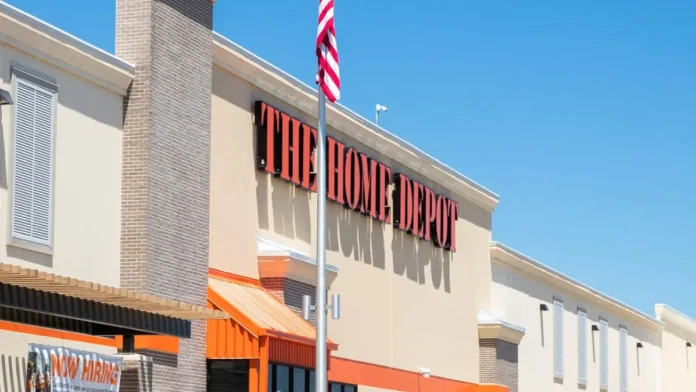Home Depot Q1 Fiscal 2025 Results: Sales Up 9.4%, Earnings Down Slightly. Its sales were up by 9.4% last year, but with flat U.S. sales and a fall in net earnings, The Home Depot may be finding that the popular home-improvement market is starting to cool off. An increase in short-term revenue is good news, but with comp sales dropping by 0.3%, the bigger message is that the sector is going from growth fueled by the pandemic to a slower time focused on getting more efficient.
Any retailer that hopes home improvement will keep growing should be prepared. While The Home Depot remains solid, signs are appearing that consumer excitement is declining — mainly for more significant projects.
Q1 Snapshot: A Balanced Act Between Optimism and Market Realities
Home Depot’s Q1 fiscal 2025 results reflect a retailer straddling two worlds: residual pandemic-driven gains and a more conservative macroeconomic environment.
Key highlights from the quarter:
$39.9 billion in sales, up 9.4% YoY
U.S. comparable sales increased by just 0.2%
Net earnings dropped to $3.4 billion from $3.6 billion YoY
Adjusted EPS came in at $3.56, down from $3.67
Foreign exchange drag of approximately 70 basis points
CEO Ted Decker’s statement about “continued customer engagement across smaller projects” hints at a subtle consumer shift. DIY isn’t dead, but it’s downsizing — from major remodels to weekend touch-ups.
This pivot matters because it reshapes how retailers allocate inventory, staffing, and promotional focus. When the mix of transactions leans toward small-ticket items, margins, labor efficiency, and cross-sell opportunities all evolve.
What This Means for Retailers: Rethinking the Home Improvement Boom
For supermarket buyers, FMCG suppliers, and private label brands watching the broader retail ecosystem, Home Depot’s Q1 is instructive.
Here’s why:
1. The DIY craze is cooling — but not collapsing
Consumers still value their homes, but high interest rates and inflation are taming the appetite for major improvements. Expect:
A rise in demand for maintenance and seasonal products over capital-intensive remodels
Greater reliance on category depth and convenience, not just price
Strategic bundling of small project kits or curated seasonal displays
Big box giants are recalibrating, not retreating
Home Depot is reaffirming its full-year guidance, including modest 2.8% total sales growth, 13 new stores, and capital expenditures aligned at 2.5% of sales. This shows confidence — but also realism.
Retailers shouldn’t misinterpret this as complacency. Instead, it’s an indication of tight operational discipline:
Holding margins steady (gross margin of 33.4%)
Slight EPS decline, but within acceptable investor range
Continued focus on supply chain investment and tech-led efficiency
Competitive Advantage Now Depends on Operational Precision
With the home improvement category normalizing, retailers must shift from expansion to optimization. This includes:
Smarter SKU rationalization: Push fewer, better-performing items
Localized assortment planning: Reflecting geographic seasonality, especially in DIY projects
Flexible labor models: As spring season peaks shift, workforce strategies must adapt
Home Depot’s 470,000-strong workforce and 2,350 store footprint are massive assets — but also massive liabilities if not aligned with emerging demand patterns.
What Supermarkets and FMCG Can Learn from Home Depot Q1 Fiscal 2025 Results
The flattening of comparable sales, despite high topline growth, is a red flag for any retailer riding high on pandemic trends. Whether in home improvement or grocery, consumer behavior is fragmenting, and growth now lies in:
Precision retailing over blanket promotions
Efficiency over expansion
Margin management over raw sales numbers
Supermarket buyers should consider the trickle-down effect: if consumers are cutting back on large home upgrades, they may also trim spending on premium household items, pet projects, and adjacent convenience categories.
Final Takeaway: Home Depot’s Results Are a Reality Check — And a Roadmap
The Home Depot Q1 Fiscal 2025 results show that the retailer is navigating a plateau, not a plunge. For those in retail watching from the sidelines, the message is clear:
Don’t chase yesterday’s growth — prepare for tomorrow’s efficiency.
Growth is no longer about how fast you scale. It’s about how well you adapt — to economic signals, consumer behavior, and operational headwinds.
As retail enters this new phase, Home Depot’s playbook offers both caution and clarity. There’s still room to grow, but only for those who move with strategic intent.



